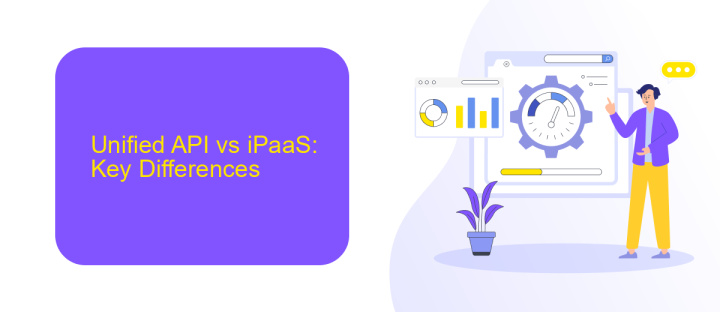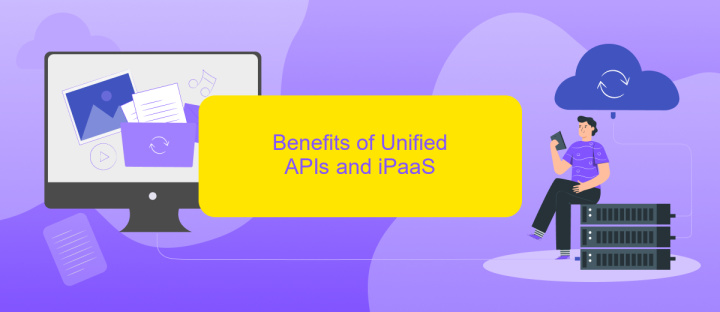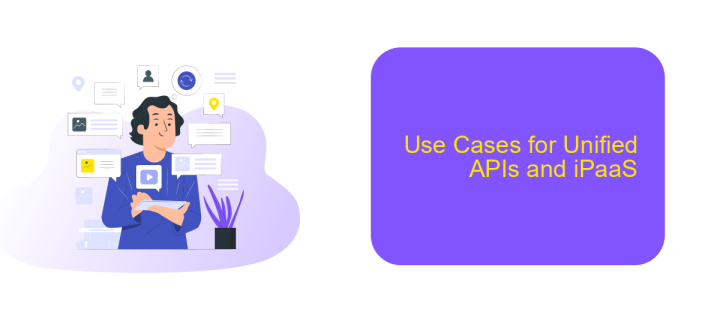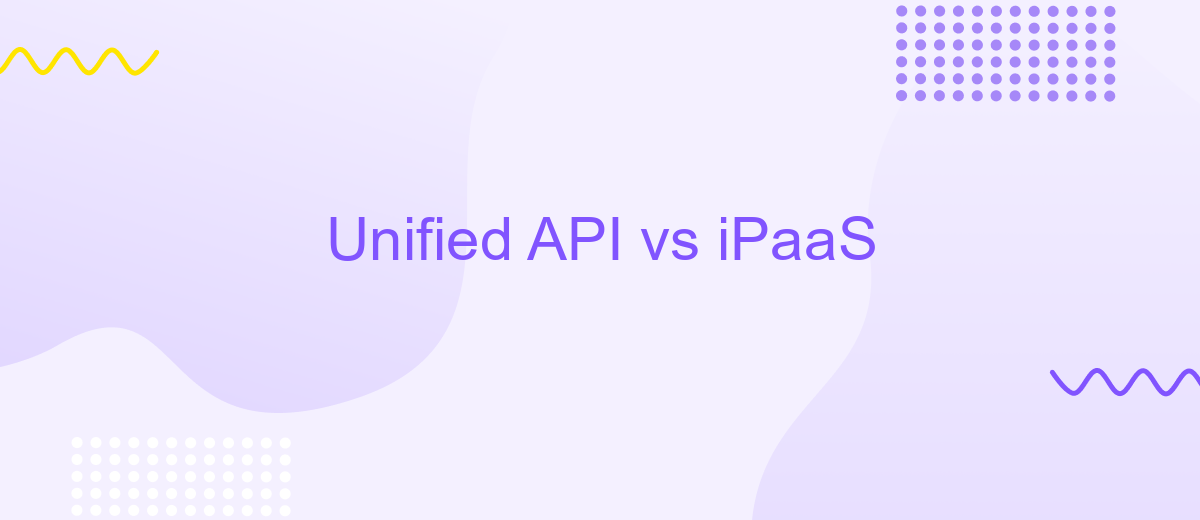Unified API vs iPaaS
In today's rapidly evolving digital landscape, businesses are increasingly reliant on seamless integration of various software applications. This article explores two prominent solutions: Unified API and Integration Platform as a Service (iPaaS). We will compare their features, advantages, and potential drawbacks to help you determine which approach best suits your organization's integration needs. Join us as we delve into the intricacies of these integration technologies.
Introduction
In today's rapidly evolving digital landscape, businesses are constantly searching for efficient ways to manage and integrate their various applications and data sources. Two popular solutions for achieving seamless integration are Unified APIs and Integration Platform as a Service (iPaaS). While both approaches aim to simplify connectivity and enhance productivity, they differ significantly in their methodologies and use cases.
- Unified API: A single API that aggregates multiple APIs from different services into one interface.
- iPaaS: A cloud-based service that enables the development, execution, and governance of integration flows connecting any combination of on-premise and cloud-based processes, services, applications, and data.
Choosing between a Unified API and iPaaS depends on various factors such as the complexity of your integration needs, budget, and technical expertise. For instance, ApiX-Drive offers a versatile iPaaS solution that allows businesses to automate workflows and integrate multiple applications without extensive coding knowledge. Understanding the strengths and limitations of each approach will help you make an informed decision that best suits your organizational requirements.
Unified API vs iPaaS: Key Differences

Unified API and iPaaS (Integration Platform as a Service) offer distinct approaches to integration. A Unified API consolidates multiple APIs into a single, consistent interface, simplifying the integration process for developers. It reduces the complexity of managing numerous APIs, providing a streamlined, uniform experience. However, it may not offer as much flexibility in handling specific, nuanced requirements of individual services. In contrast, iPaaS platforms like ApiX-Drive enable businesses to connect disparate applications and services without extensive coding. They offer pre-built connectors and workflows, making it easier to customize and automate integrations according to specific business needs.
While Unified APIs provide a simplified, consistent interface, they can be limited in scope compared to the comprehensive capabilities of iPaaS solutions. iPaaS platforms support a wide range of integration scenarios, from simple data syncs to complex, multi-step workflows. Additionally, iPaaS solutions often include monitoring, error handling, and scalability features, which are crucial for maintaining robust integrations. Therefore, the choice between Unified API and iPaaS depends on the specific requirements and complexity of the integration tasks at hand.
Benefits of Unified APIs and iPaaS

Unified APIs and iPaaS (Integration Platform as a Service) offer significant advantages for businesses looking to streamline their integration processes. By providing a single interface to access multiple services, Unified APIs simplify the complexity of managing various APIs from different vendors. This results in reduced development time and lower maintenance costs.
- Efficiency: Unified APIs and iPaaS solutions like ApiX-Drive allow for faster and more efficient integration of services, reducing the time needed to connect different systems.
- Scalability: These platforms are designed to handle growing business needs, enabling seamless scaling without the need for extensive reconfiguration.
- Cost-Effectiveness: By consolidating multiple integrations into a single platform, businesses can save on both development and operational costs.
- Flexibility: Unified APIs and iPaaS provide the flexibility to integrate a wide range of services and applications, making it easier to adapt to changing business requirements.
In conclusion, leveraging Unified APIs and iPaaS solutions like ApiX-Drive can significantly enhance an organization's ability to manage integrations efficiently. These tools not only simplify the process but also offer scalability, cost savings, and flexibility, making them invaluable for modern businesses.
Use Cases for Unified APIs and iPaaS

Unified APIs and iPaaS are essential tools for modern businesses looking to streamline their operations and enhance connectivity across various platforms. Unified APIs provide a single interface to access multiple services, simplifying the integration process. On the other hand, iPaaS (Integration Platform as a Service) offers a comprehensive solution for managing and automating integrations between different applications and data sources.
These technologies are particularly useful in scenarios where businesses need to connect disparate systems quickly and efficiently. For instance, companies can use Unified APIs to integrate CRM systems with marketing automation tools, while iPaaS solutions like ApiX-Drive can automate data flows between e-commerce platforms and inventory management systems.
- Streamlining customer data integration across CRM, ERP, and marketing automation tools.
- Automating workflows between e-commerce platforms and inventory management systems.
- Facilitating real-time data synchronization between on-premises and cloud applications.
- Enabling seamless API management and monitoring through a unified interface.
In summary, Unified APIs and iPaaS platforms like ApiX-Drive empower businesses to achieve greater efficiency and agility by simplifying complex integrations. These tools are indispensable for organizations aiming to optimize their operations and enhance their technological ecosystem.
Conclusion
In conclusion, both Unified API and iPaaS offer significant advantages for businesses looking to streamline their integration processes. Unified APIs provide a simplified and consistent interface for multiple services, reducing the complexity of managing numerous APIs. On the other hand, iPaaS platforms offer a more comprehensive solution by enabling the integration of various applications and data sources through a single platform, often with minimal coding required.
When choosing between Unified API and iPaaS, businesses should consider their specific needs and technical capabilities. For instance, if a company requires quick and easy integration of multiple services without extensive development, an iPaaS solution like ApiX-Drive can be highly beneficial. ApiX-Drive allows users to automate workflows and connect various applications seamlessly, thereby enhancing operational efficiency. Ultimately, the choice between Unified API and iPaaS will depend on the organization’s integration requirements, available resources, and long-term goals.
- Automate the work of an online store or landing
- Empower through integration
- Don't spend money on programmers and integrators
- Save time by automating routine tasks
FAQ
What is the primary difference between a Unified API and iPaaS?
When should I use a Unified API over iPaaS?
Can Unified APIs and iPaaS be used together?
What are some common use cases for iPaaS?
How does ApiX-Drive facilitate integrations?
Apix-Drive will help optimize business processes, save you from a lot of routine tasks and unnecessary costs for automation, attracting additional specialists. Try setting up a free test connection with ApiX-Drive and see for yourself. Now you have to think about where to invest the freed time and money!


